I like to think of myself as someone who eats well—by that, I mean I try to stick to foods that are good for me and generally steer clear of ultra-processed options. That’s not to say I never indulge in a tub of ice cream, a glass of Prosecco, or a handful of Pringles (I definitely do!), but those are occasional treats. Overall, I believed my diet was pretty healthy. Or at least, I thought it was...
Now in my mid-forties, I’m increasingly conscious of staying as healthy as possible as I head into my 50s and beyond. That’s what drew me to the ZOE programme.
I’d already become a bit of a fan of founder Tim Spector—his cookbook and gut health advice had really resonated with me. But what appealed most about ZOE was the promise of personalised insights: learning how my own body processes sugar and fats, getting a score on my unique gut microbiome, and discovering which foods I should be eating more of to improve it.
I was also keen to access lots of delicious and nutritionally balanced ZOE recipes to try myself at home.
What is the Zoe diet?
The ZOE programme isn’t a traditional diet with strict meal plans or calorie counting like the Fast 800—instead, it’s a personalised nutrition plan based on how your body responds to food.
Developed by scientists and co-founded by Professor Tim Spector, the programme starts with a set of three at-home tests: a gut microbiome test (using a stool sample), a blood fat test (using a finger-prick device and two sets of cookies), and a blood sugar test (via a continuous glucose monitor that you wear for two weeks). These tests provide a detailed picture of how your body processes fats, sugars, and how diverse your gut bacteria are. Using this data, ZOE gives you tailored advice on which foods support your health best, helping you make informed choices to improve your energy, digestion, and long-term wellbeing.
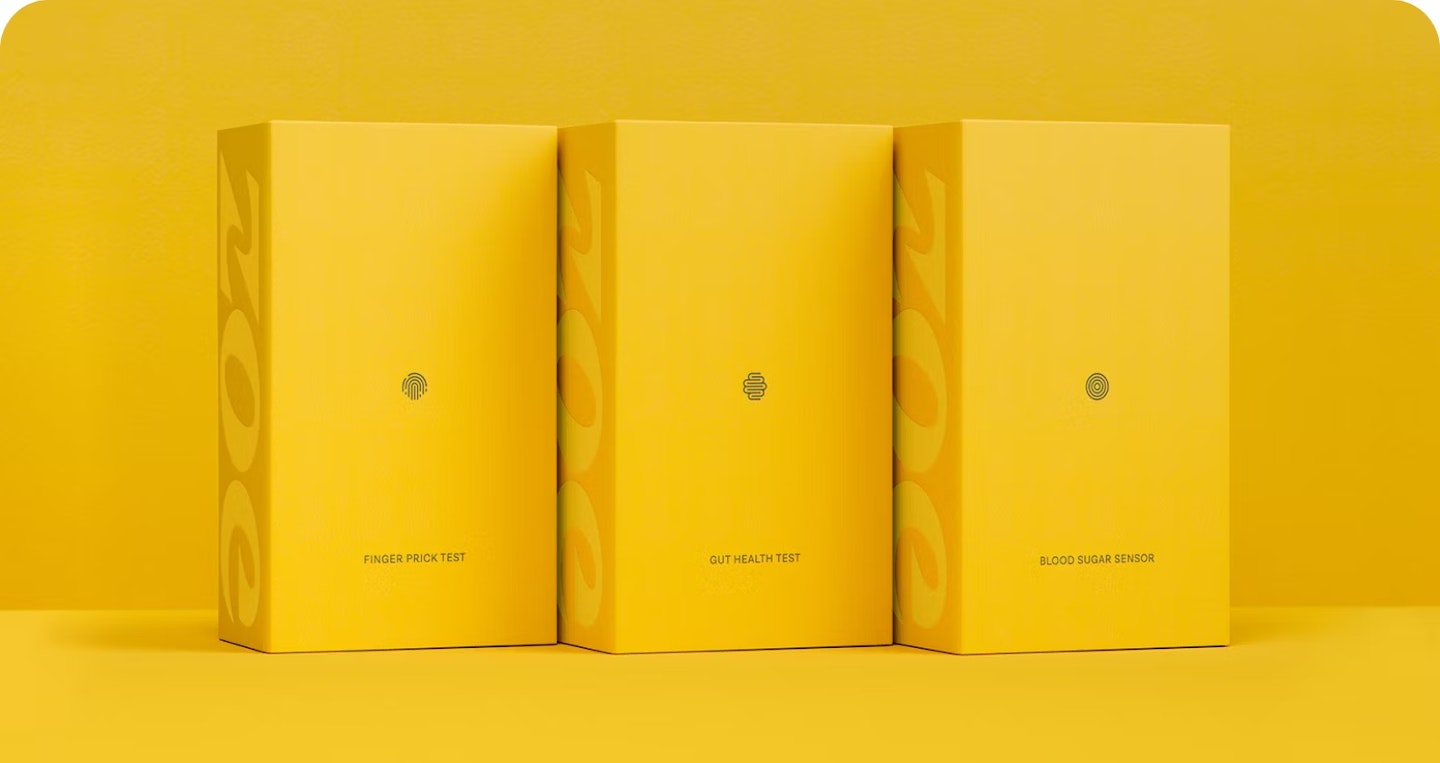
Taking the Zoe tests
The first thing to note is that you'll need a completely free day when doing the tests. It's a fairly involved process, with several tasks to complete within specific time windows, so I made sure to stay at home for the entire day.
Blood glucose monitor
The day before you begin testing, you'll need to attach the blood glucose monitor to your arm. It might feel a little daunting at first — it’s a bit like stapling your arm — but I promise it doesn’t hurt at all. Once it’s in place and covered with a bright yellow ZOE plaster, simply follow the instructions on the ZOE app to activate it. From that point on, you’ll be able to track your blood glucose levels in real time for the next two weeks.
ZOE will analyse this data, but it’s also a great opportunity for you to experiment. Try eating different foods and observe how your body responds. For example, you might eat before and after exercise to compare the effects, or try porridge oats on their own one day and with Greek yogurt the next. It's a fascinating way to see how different food combinations and timings affect your glucose levels.
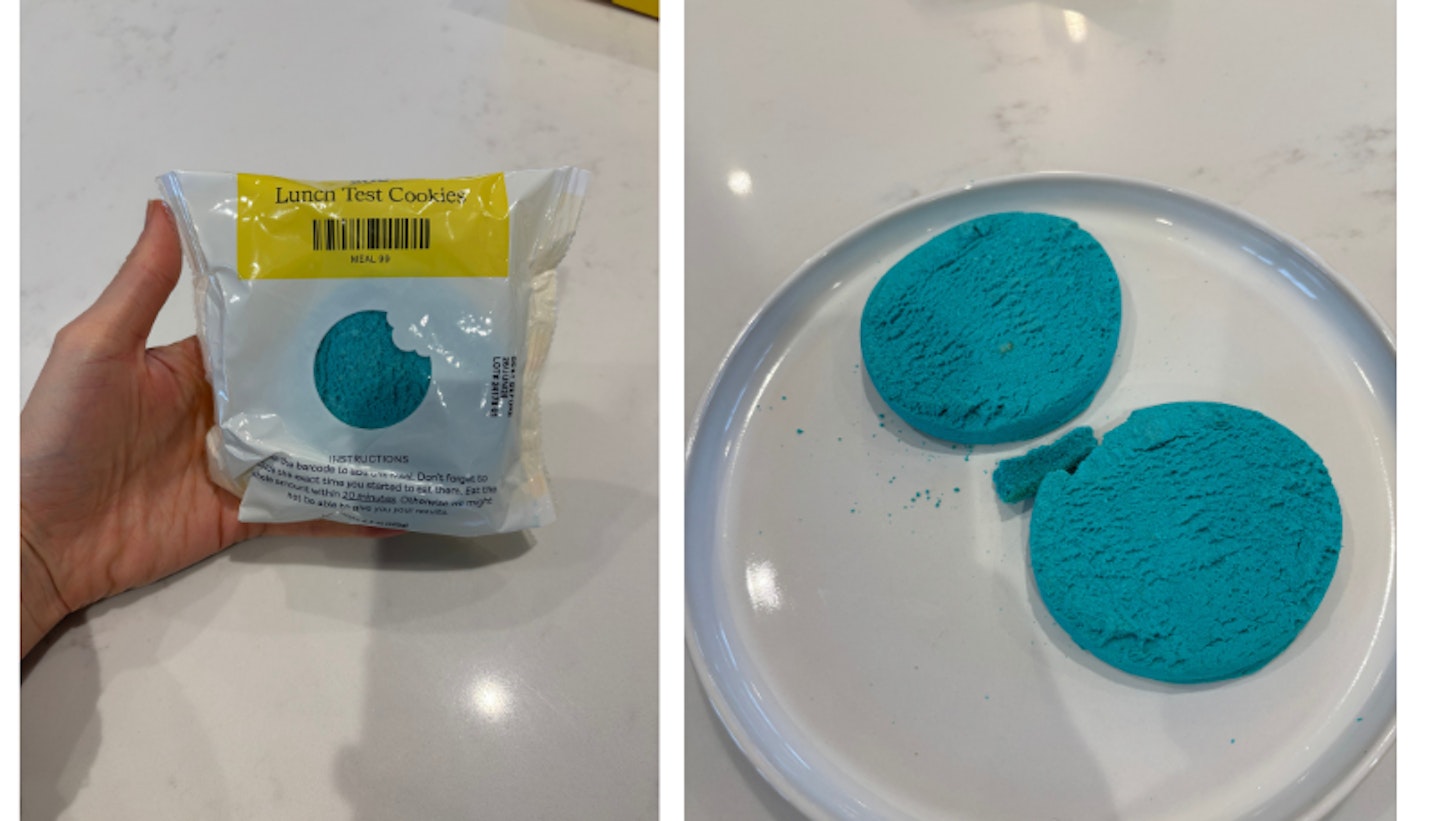
Eating the cookies
When I first found out I’d be eating two cookies for breakfast and two more for lunch on test day, I was thrilled. But, surprisingly, this turned out to be the most unpleasant part of the entire process.
Breakfast consisted of two very large white chocolate cookies. They were tasty, but as someone who doesn’t usually eat much sugar in the morning, I started to feel quite sick halfway through the second one. The instructions are clear — you must eat all of the cookies to avoid skewing your results.
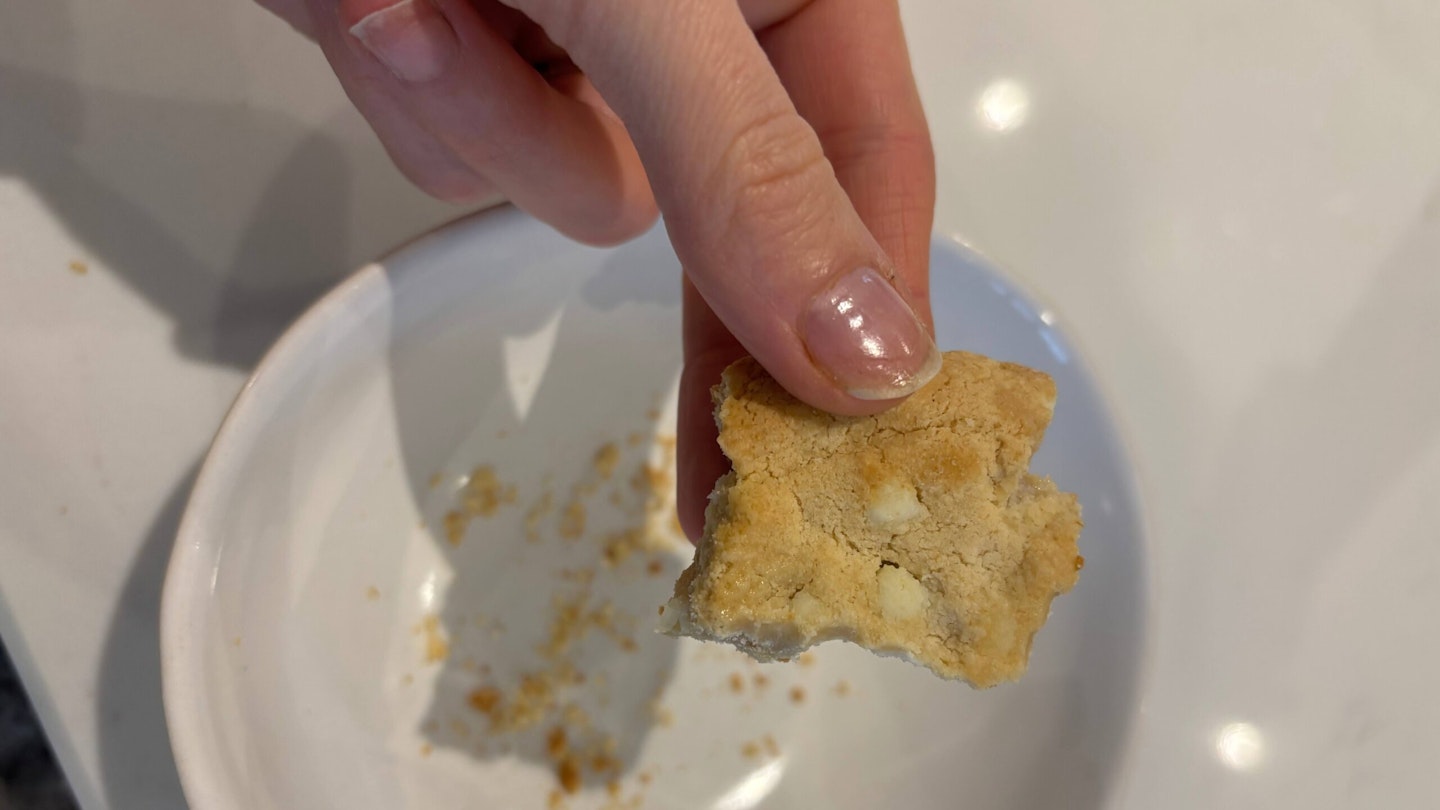
After that sugar-heavy start, I wasn’t allowed to consume anything else for four hours, except water. I felt my blood sugar spike and crash, leaving me with a pounding headache, nausea, and zero energy.
Then came lunch: two more large, sweet cookies — this time bright blue. They were the last thing I wanted to eat. I was craving something savoury, and to make matters worse, these didn’t taste as good as the first batch. Forcing them down was a real challenge. Once again, my blood sugar soared and plummeted, and all I could do was lie in a dark room and ride it out.
The blood sugar test
Once the two hours were up, it was time to take the blood sample. This involved using a small device to ‘staple’ my arm again and letting enough blood trickle out to fill a small test tube. Amazingly, it didn’t hurt at all — just like the glucose monitor.
To help the blood flow more easily, you’re advised to warm up your arm beforehand using the provided heat pack and by doing some arm circles. I’ll admit, I found this part a bit fiddly and stressful. The sample needs to be taken within a specific time window, and there’s quite a bit to remember, which added to the pressure. I kept thinking that I really didn't want to mess up the tests as I couldn't bear the thought of doing the cookie test again!
Taking the stool sample
The final part of the test involves collecting a stool sample. Remember those blue cookies? Now you’re waiting for them to reappear. Once you notice a blue or green colour in your stool, you’ll need to log the time in the ZOE app — this is how they calculate your gut transit time (i.e. how long it takes food to move through your system).
You’ll also need to collect a stool sample, which doesn’t have to be blue or green — it just needs to be from your first bowel movement after eating the test cookies.
Thankfully, the process is straightforward and made easier by the inclusion of a disposable toilet bowl hammock, which makes collecting the sample much more hygienic and hassle-free.
Posting your samples
Next, you’ll need to post your blood and stool samples as soon as possible, as the instructions advise. Both come with clearly labelled, prepaid return boxes, so it’s simply a case of packaging them up and taking them to the post office.
The blood sample is the most time-sensitive and comes with a Royal Mail Tracked 24 label to ensure it’s delivered quickly. I did my ZOE tests on a Saturday and dropped them off at the post office that afternoon. Unfortunately, this meant they sat there until Monday, as there were no Sunday collections.
If the same happens to you, don’t panic — the delay didn’t affect my results at all.
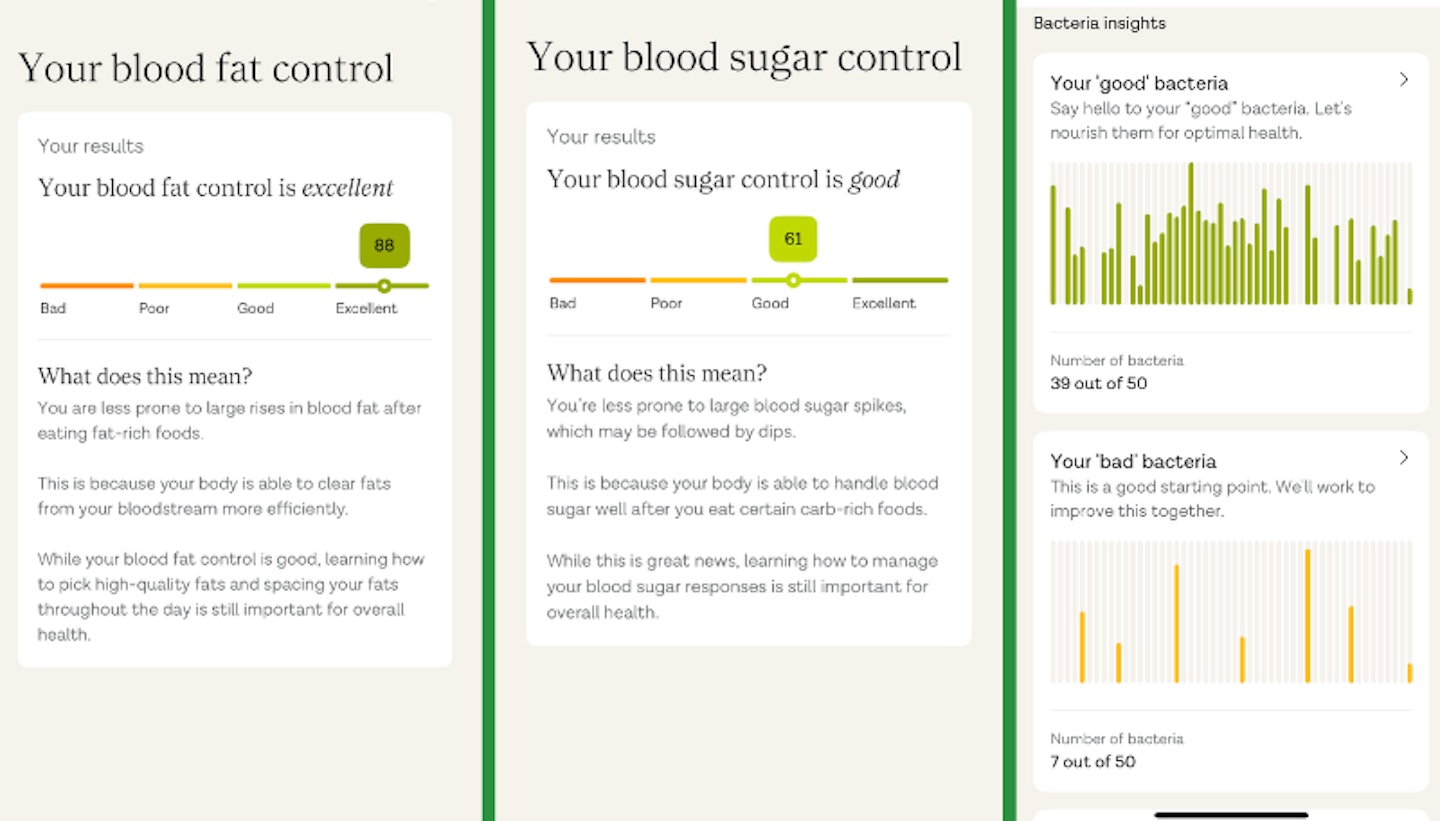
My Zoe test results
Typically it takes around two weeks for you to receive results (mine did take about 3 weeks), depending on how busy the labs are.
My blood sugar control results
Obviously after wearing the blood glucose monitor I'd had a two-week live view of my blood sugar control, but obviously I had nothing to compare to this to and didn't know if this was a good result considering my age.
I was really pleased that the results came back as 'good' with a score of 61 out of 100. This meant I was less prone to large sugar spikes and dips. This is because my body is able to handle sugar well after I eat certain carb-rich foods.
What I'd learnt from wearing the blood glucose monitor was that when I ate carb-rich foods like rice or pasta, I experienced a sugar spike and subsequent big dip. However, if I combined these carb-food rich foods with protein like chicken or Greek yogurt, my levels remained fairly stable. This was a real eye-opener and something I'd never noticed before.
Prior to Zoe one of my favourite lazy meals would be a big bowlful of pasta with just some seasoned tinned tomatoes. I thought this as a low-fat dinner was fine but it had definitely been spiking blood glucose and leaving me craving sweet things all night.
In fact, what surprised me the most was that my body seemed far more sensitive to carbs than it was to sugary snacks and puddings. I still experienced a bit of a spike with these foods but as I tended to eat them after a protein based meal, the spike was far less dramatic.
I'd always suspected that my blood sugar was dipping in the morning if I'd eaten something sugary the night before, as I would often feel very sick and this was confirmed with the results.
Aside from the above my blood sugar seemed surprisingly stable throughout the two weeks, regardless of when I exercised and ate.
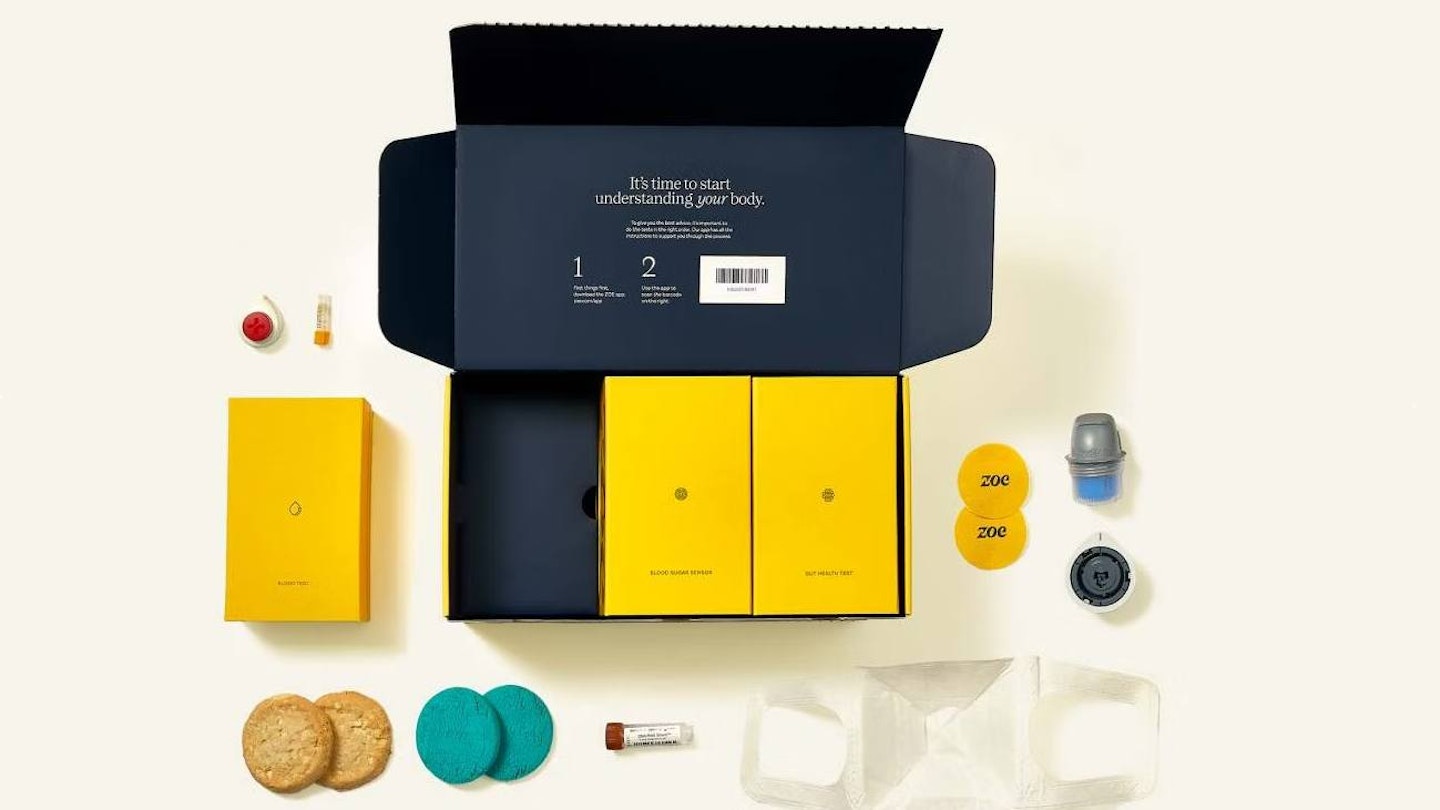
My blood fat control
My blood fat control results were even better with a score of 88 of of 100 and a rating of 'excellent. This meant I was less prone to large rises in blood fat after eating fat-rich foods. This is because my body is able to clear fats from my bloodstream quickly. However, obviously it's better that I eat high-quality fats like nuts, seeds, olive oil over processed fats and also important that I space them out throughout the day. I'm not overweight and have never really struggled with that so this wasn't a surprise, but I had never thought about the importance of spacing out my fats throughout the day, so that was a good learning.
My gut health score
My final score was for my gut health and I was given 90 out of 100, which is classed as excellent. I was thrilled with this especially as before taking the Zoe test I'd been following the advice from Tim Spector about eating at least 30 plants a day and and had been incorporating fermented foods like kombucha and kefir into my diet.
This meant I had a higher ratio of 'good' bacteria to 'bad' gut bacteria compared with other people. Apparently people with more good bacteria tend to have better blood sugar and fat control and other markers of good health.
I even received a list of the number of good and bad bacteria found in my sample. I had 39 of out 50 good bacterias and 7 out of 50 bad ones. All the bacterias found were named and listed. What I would have found more useful though was some extra info on them. For example, I had 5% Bacteroides uniformis, it would have been good to know the sources of this and how I could reduce this number. I ended up Googling many of the bacterias to find out more information on them, it would have been helpful if Zoe could have provided this.
In fact, when Googled Bacteroides uniformis I discovered that this is actually a good bacteria that helps break down complex carbs, however an imbalance or overgrowth can be bad for your health. So with 5% I'm not actually sure if this is classed as imbalance or healthy amount so some more context in these results would be useful.
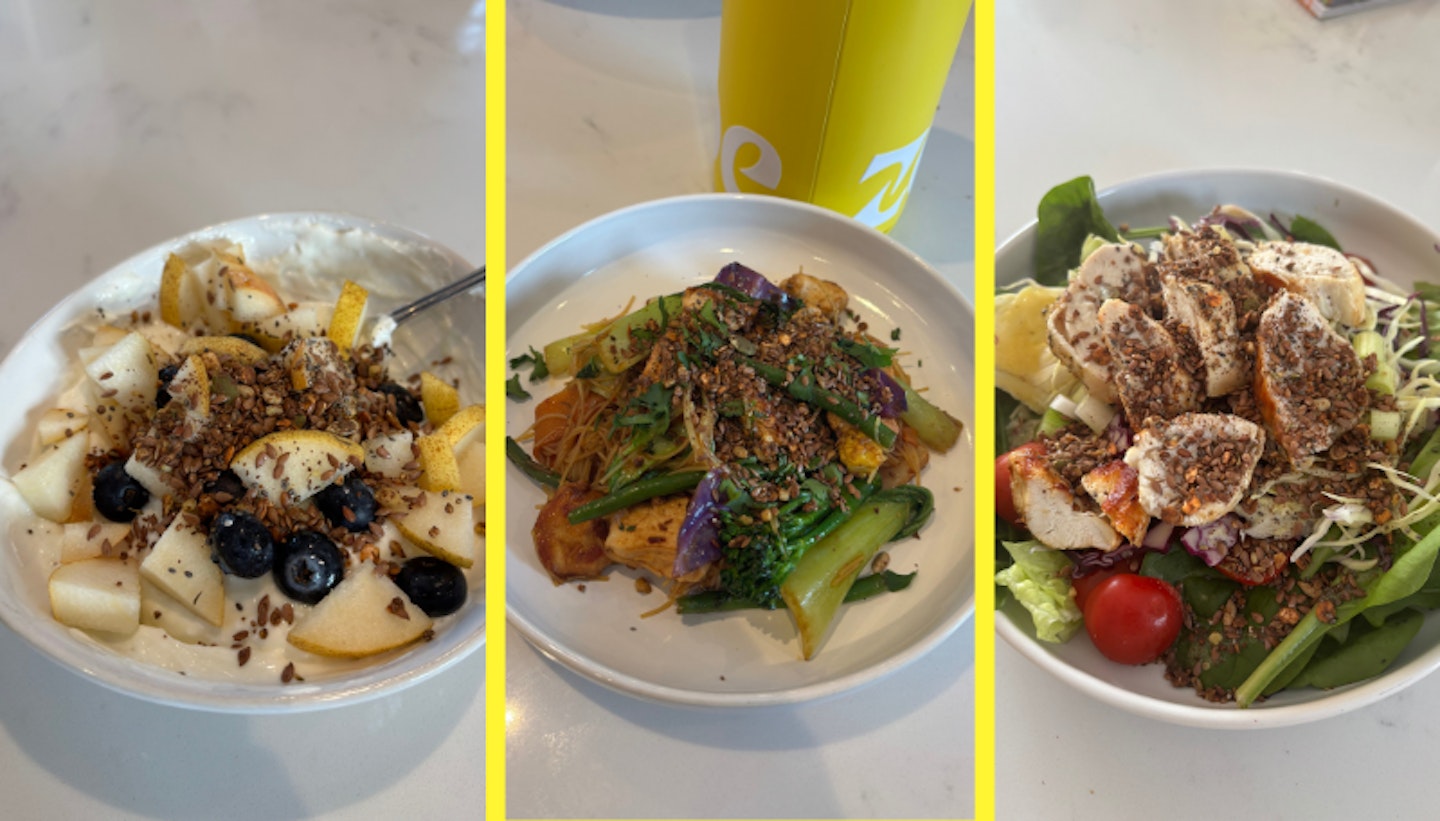
Final verdict
As I mentioned earlier, I wouldn’t necessarily recommend Zoe to someone whose sole goal is to lose weight. If your diet currently includes a lot of ultra-processed foods, then yes, you might lose weight by following Zoe—but the same could be said for many other diet plans.
The real value of Zoe lies in the personalised insights it gives you. The tests assess how well your body handles blood sugar and fat, and provide a snapshot of your gut health. I’d especially recommend Zoe to anyone looking to introduce more plants into their diet and better understand how different foods affect their body.
Personally, I haven’t lost weight through Zoe, but I’ve learned a lot. I now know which food combinations work best for me, which ones support my gut health, and which might hinder it. I try to include as many fruits, vegetables, herbs, spices, and legumes in my meals as possible. While the number on the scale hasn’t changed, I’ve noticed less bloating, more regular digestion, steadier energy levels, and clearer skin.
That said, there are a few things to keep in mind. The programme is expensive, and if you already eat a fairly healthy diet, you might not uncover many surprises. The initial testing day is very involved, you need to dedicate time to it. Eating the cookies was much harder than I anticipated, and me feel very unwell for the pretty much the whole day!
During the two weeks of wearing the blood glucose monitor, it’s worth experimenting with different foods and combinations to really understand how your body responds. That’s how you’ll get the most out of the experience—like discovering which carbs might leave you reaching for a packet of biscuits a couple of hours later.
One of the key benefits of joining the Zoe programme is the wealth of gut-friendly recipes you’ll gain access to, along with the support of the Zoe community. The member groups are a great space to connect with others, ask questions, and share experiences.
In summary, Zoe is a fantastic option for anyone currently eating a poor diet—you’re likely to see noticeable improvements if you follow the personalised advice. It’s also ideal if you’re struggling with fluctuating energy levels and want to better understand which foods work best for your body. However, it is a significant investment, so it’s important to make the most of it. That means taking the time to properly complete the tests, logging your meals, experimenting with different food combinations, and ensuring you return your samples promptly. If you're going to do it, do it properly!
1.
Zoe Daily 30
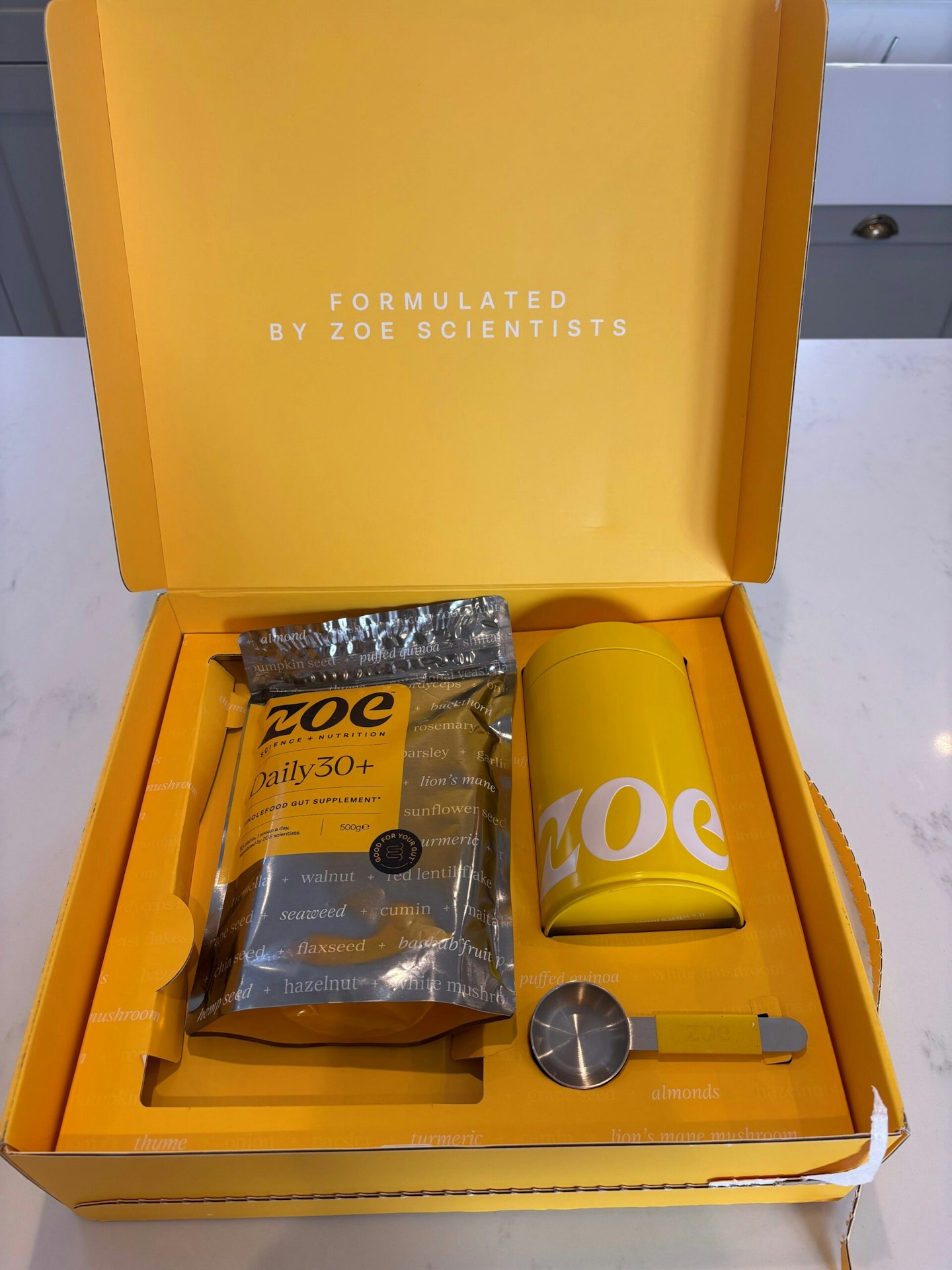
zoe.com
If you want to dip your toe into better gut health then try Zoe's blend of 30+ diverse fibers that support your gut health, improve digestion, and increase energy. I sprinkled this delicious mix on yogurt, stir fries, salads and soups. Not only does it taste great but it really helped to reduce my bloating!
_Claire Tapley is a digital editor for Yours.co.uk. She is a journalist with over 16 years' experience writing for women over 50. In her previous role she was deputy editor on Yours magazine for nine years, before moving over to Yours.co.uk. She has recently trained become an accredited Executive Menopause Coach, so that she can better support those going through the menopause in the workplace.
_
